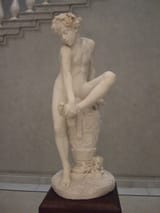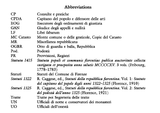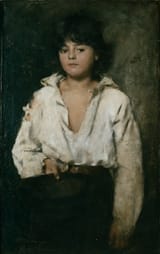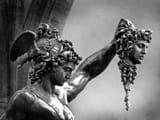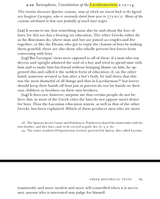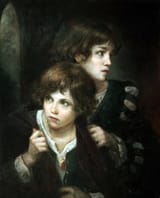Anonymous
6/13/2025, 5:19:36 AM
No.17759964
>>17760216
>>17761860
>>17762568
>>17762773
>>17763338
>>17764954
>>17765547
>>17767629
>>17770139
>>17775196
Pederasty was endemic in Renaissance Florence
For centuries in Medieval Europe, Florence carried the reputation of homosexuality. Homosexuality was referred to as the "Italian vice" throughout Europe; in Germany, another word for a sodomite was a "florenzer".
In 1376, Pope Gregory XI commented "In the whole world I believe there are no two sins more abominable than those that prevail among the Florentines. The first is their usury and infidelity. The second, is so abominable that I dare not mention it."
Homosexuality was so widespread in Florence that an "Office of the Night" existed with the sole purpose of policing sodomy, which was legally and socially synonymous with sexual relations between men and boys. However, this attempt to crack down on sodomy was not successful. Court records prove, irrefutably, that the majority of Florentine men during this time period were sexually active with boys, without at least two out of every three men being incriminated in the crime of sodomy. These court records include famous figures such as Leonardo da Vinci and Benvenuto Cellini.
Florentine men married late, at around 30, and this lack of a sexual outlet likely contributed to widespread pederasty. Art from the period often emphasizes the beauty of youthful males. Florentine sculptor Donatello's statue of David was the first freestanding nude male sculpture since antiquity, starting a trend of depicting nude boys in sculpture.
This pederastic culture accompanied the great efflorescence of cultural and intellectual innovation of the Renaissance, comparable to the miracle of Ancient Greece, who shared a similar, but socially sanctioned, culture of pederasty, believing that such relationships were imperative in transferring knowledge and virtues between generations.
The widespread nature of pederasty in Renaissance Florence, with the majority of men partaking in such activities, serves as an example that sexual practices that men are willing to engage in are influenced by the culture which they live in.
In 1376, Pope Gregory XI commented "In the whole world I believe there are no two sins more abominable than those that prevail among the Florentines. The first is their usury and infidelity. The second, is so abominable that I dare not mention it."
Homosexuality was so widespread in Florence that an "Office of the Night" existed with the sole purpose of policing sodomy, which was legally and socially synonymous with sexual relations between men and boys. However, this attempt to crack down on sodomy was not successful. Court records prove, irrefutably, that the majority of Florentine men during this time period were sexually active with boys, without at least two out of every three men being incriminated in the crime of sodomy. These court records include famous figures such as Leonardo da Vinci and Benvenuto Cellini.
Florentine men married late, at around 30, and this lack of a sexual outlet likely contributed to widespread pederasty. Art from the period often emphasizes the beauty of youthful males. Florentine sculptor Donatello's statue of David was the first freestanding nude male sculpture since antiquity, starting a trend of depicting nude boys in sculpture.
This pederastic culture accompanied the great efflorescence of cultural and intellectual innovation of the Renaissance, comparable to the miracle of Ancient Greece, who shared a similar, but socially sanctioned, culture of pederasty, believing that such relationships were imperative in transferring knowledge and virtues between generations.
The widespread nature of pederasty in Renaissance Florence, with the majority of men partaking in such activities, serves as an example that sexual practices that men are willing to engage in are influenced by the culture which they live in.








